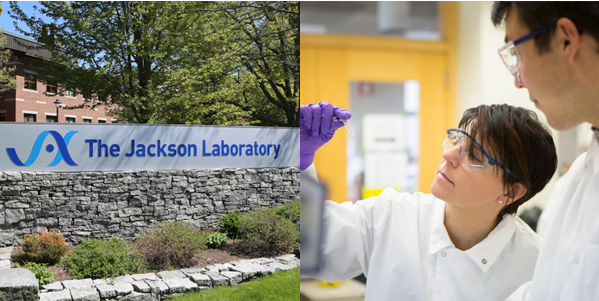
Dr. Cat Lutz and Dr. Aamir Zuberi are scientists at The Jackson Laboratory. Dr. Lutz is the Director of the Rare and Orphan Disease Center. In this role, she works with multiple foundation and patient organizations to ensure that mouse resources needed to advance rare diseases through the preclinical stages of therapeutic development are available to the broader biomedical community. Dr. Zuberi is an expert in genetic engineering, using CRISPR/Cas9 and other cutting edge technologies to engineer patient specific mutations into the mouse genome.
Dr Lutz and Zuberi work side by side to strategize on what mouse models will be most informative and also design the experiments necessary to evaluate how closely the mouse models recapitulate key aspects of a given disease. They then use these mouse models to test various therapeutics, such as gene therapy.
Lutz notes, “accessibility to mouse models is key message that we try to promote.While many models exist, their availability to the greater scientific community is limited when they are not made available through a public repository”.
With no mouse models publically available, the duo set out to make a the loss of function mutation in mice that will help to test therapeutics. At the same time, they engineered a specific missense mutation also seen in a subset of GM1 patients. The success was quick, with both mutations achieved in the first round of microinjections. “with assisted reproductive technologies, we are able to bypass the traditional breeding and generate large cohorts of mice for experimentation in just one generation” says Zuberi.
The two are hopeful that these experiments will allow the GM1 research community quick access to the preclinical models and that preclinical data needed for FDA clinical trials will be generated as effectively and efficiently as possible.
